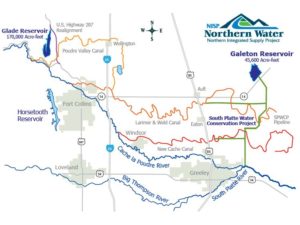Trout Unlimited praises passage of bill to support wildlife and outdoor recreation
(Denver)—Trout Unlimited praised the passage of the Hunting, Fishing, and Parks for Future Generations Act (SB18-143) today in the Colorado General Assembly – creating a sustainable funding stream for Colorado Parks and Wildlife that will help fund efforts to preserve the state’s prized fish and wildlife populations and support outdoor recreation opportunities.
In recent years, Colorado Parks and Wildlife (CPW) has seen its resources increasingly squeezed. The last resident license fee increase took place in 2005—and since that time, expenses have climbed by more than 25 percent and Colorado’s population has grown rapidly, putting more and more pressure on fish, wildlife, and their habitat as well as on the state’s recreation infrastructure.
Moreover, the budget squeeze has forced the agency to cut or defund 50 positions and slice $40 million from its wildlife budget—and without new funding, further cuts would be required. The bill passed today by the Colorado legislature will give CPW authority to raise hunting and fishing license fees to offset the rising costs of inflation. The modest fee increase ($8 for resident fishing licenses) will begin in 2019, with any future increases tied to the consumer price index. CPW is also looking at other revenue sources to support conservation priorities.
“Sportsmen and women have always taken pride in supporting our state’s outstanding outdoor resources and hunting and fishing opportunities,” said David Nickum, executive director of Colorado Trout Unlimited. “Hunters and anglers understand that Colorado’s wildlife and natural spaces are among our most valuable resources—and that we need to invest in our outdoor quality of life. This fee authority will help ensure that future generations have access to the same quality hunting, fishing and recreational opportunities available today.”
The enhanced revenue stream will help CPW invest in a range of sportsmen’s programs and initiatives, including:
- Providing more funds for critical programs like hunter education and Fishing is Fun;
- Expanding access for hunters and anglers by renewing high-priority leases and access programs on private land;
- Repairing CPW’s aging dams and reservoir infrastructure to keep them open for fishing;
- Modernizing hatcheries to increase the number of fish stocked in those Colorado waters that can’t support robust wild populations.
“TU is grateful to have been afforded a seat on the CPW ‘Sportsmen’s Roundtable’—a collaborative, statewide forum to engage sportsmen and women on the agency’s strategic plans and financial issues,” said Ty Churchwell, TU’s San Juan Mountains coordinator. “We applaud the CPW for involving sportsmen’s conservation organizations in development of this bill, and holding dozens of public meetings across the state. Their commitment to broad, extensive, debated input on development of this bill has helped secure support for its passage.”
Trout Unlimited thanks Colorado Parks and Wildlife Director Bob Broscheid for his leadership as well as the bill sponsors, state Senators Stephen Fenberg and Don Coram, and Representatives Jeni Arndt and James Wilson.
Download the Press Release here.














 The
The 
